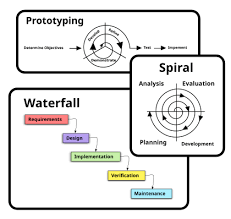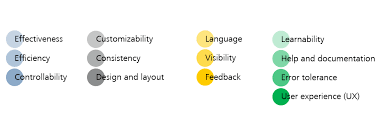Mastering the Art of Becoming an Application Developer
The Role of an Application Developer
An application developer is a professional responsible for creating, testing, and programming applications for computers, mobile devices, and other digital platforms. These skilled individuals play a crucial role in the software development process, turning ideas into functional and user-friendly applications that meet specific requirements.
Key Responsibilities of an Application Developer:
- Designing Applications: Application developers collaborate with stakeholders to understand project requirements and design software solutions that address those needs.
- Coding and Programming: They write code using various programming languages such as Java, C++, Python, or JavaScript to develop the application’s functionality.
- Testing and Debugging: Developers conduct thorough testing to identify and fix any issues or bugs in the application before deployment.
- Collaborating with Teams: They work closely with designers, project managers, and other developers to ensure seamless integration of different components within the application.
- Maintaining Applications: Developers provide ongoing support, updates, and maintenance to ensure the application continues to function effectively over time.
Skills Required for Application Developers:
To excel in this role, application developers need a combination of technical skills and soft skills. Some essential skills include:
- Proficiency in Programming Languages: Knowledge of programming languages such as Java, Python, C#, or Swift is essential for developing applications.
- Problem-Solving Abilities: Developers must be able to analyze complex problems and devise effective solutions efficiently.
- Attention to Detail: Precision is crucial when writing code and conducting testing to ensure the application functions flawlessly.
- Communication Skills: Effective communication is key when collaborating with team members and conveying technical information to non-technical stakeholders.
- Creativity: Developing innovative solutions and thinking outside the box can set a developer apart in creating unique applications.
In conclusion, application developers are instrumental in shaping the digital landscape by creating cutting-edge software solutions that enhance user experiences across various platforms. Their expertise in coding, testing, and problem-solving makes them indispensable contributors to the world of technology.
Top 7 FAQs About Becoming an Application Developer
- What is an application developer called?
- Is application developer a good career?
- Is an application developer the same as a software engineer?
- What skills does an app developer need?
- What does an application developer do?
- How much money do you make as an app developer?
- What skills do you need to be a app developer?
What is an application developer called?
An individual who specializes in creating, testing, and programming applications for computers, mobile devices, and other digital platforms is commonly referred to as an “application developer.” This skilled professional plays a critical role in the software development process, translating project requirements into functional and user-friendly applications that cater to specific needs. Application developers are adept at coding, testing, debugging, and collaborating with cross-functional teams to deliver high-quality software solutions that meet the demands of modern technology.
Is application developer a good career?
Many individuals considering a career in technology often wonder, “Is application developer a good career?” The answer is a resounding yes. Application development offers a rewarding and promising career path for those with a passion for coding and problem-solving. As technology continues to advance rapidly, the demand for skilled application developers remains high across industries. With opportunities for growth, competitive salaries, and the chance to work on innovative projects, pursuing a career as an application developer can lead to a fulfilling and successful professional journey.
Is an application developer the same as a software engineer?
When considering the distinction between an application developer and a software engineer, it’s important to note that while there is some overlap in their roles, they are not exactly the same. An application developer typically focuses on creating specific applications for computers, mobile devices, or other digital platforms. They are often involved in the design, coding, testing, and maintenance of applications to meet particular user needs. On the other hand, a software engineer has a broader scope of responsibilities that may include designing entire software systems, developing algorithms, and optimizing system performance. While both roles involve programming and problem-solving skills, a software engineer often works at a more strategic level compared to an application developer.
What skills does an app developer need?
To excel as an application developer, a diverse set of skills is essential. Proficiency in programming languages like Java, Python, C#, or Swift forms the foundation for creating functional applications. Problem-solving abilities are crucial for analyzing and resolving complex issues efficiently. Attention to detail is paramount in writing code and conducting thorough testing to ensure the application operates flawlessly. Effective communication skills are necessary for collaborating with team members and conveying technical concepts to non-technical stakeholders. Creativity plays a significant role in developing innovative solutions that set app developers apart in creating unique and user-friendly applications.
What does an application developer do?
An application developer is responsible for creating, testing, and programming software applications for computers, mobile devices, and other digital platforms. Their primary role involves designing and developing applications that meet specific requirements and provide valuable solutions to users. Application developers write code using various programming languages to build the functionality of the applications, conduct testing to ensure their performance and quality, and collaborate with cross-functional teams to integrate different components seamlessly. Additionally, they are involved in maintaining and updating applications to ensure they continue to meet user needs effectively. Overall, an application developer plays a pivotal role in the software development process by bringing ideas to life through functional and user-friendly applications.
How much money do you make as an app developer?
One frequently asked question among individuals considering a career as an application developer is, “How much money do you make as an app developer?” The salary of an application developer can vary based on factors such as experience, location, industry, and specific skills. Entry-level developers may start with a lower salary and see increases as they gain more experience and expertise in the field. Experienced developers with specialized skills or working in high-demand industries may command higher salaries. Overall, app developers have the potential to earn competitive salaries that reflect their level of skill and the demand for their expertise in the ever-evolving technology sector.
What skills do you need to be a app developer?
To become an app developer, a combination of technical and soft skills is essential. Proficiency in programming languages like Java, Python, C#, or Swift is crucial for developing applications. Problem-solving abilities are also key, as developers need to analyze and solve complex issues efficiently. Attention to detail is vital when writing code and conducting testing to ensure the app functions flawlessly. Effective communication skills are necessary for collaborating with team members and conveying technical information to non-technical stakeholders. Additionally, creativity plays a significant role in developing innovative solutions that set app developers apart in creating unique and user-friendly applications.






